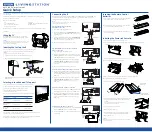
back-up of external faults and as back-up for the
50 relay.
FIGURE 12. FLUX SUMMATION RELAY (50) PROVIDES
SENSITIVE, HIGH-SPEED, SELECTIVE DIFFERENTIAL
PROTECTION (87).
The 87G relay in Fig. 13 is connected to respond
to phase differential currents from two sets of
CTs. In some applications it may include a unit
differential that includes the step-up transformer.
In contrast to a 51 or 51V relay that monitors
only one CT, the 87G relay responds to both the
generator and external contributions to a genera-
tor fault. Because of the differential connection,
the relay is immune, except for transient CT
saturation effects, to operation due to generator
load flow or external faults and, therefore, can
provide sensitive, high speed protection. While
the CTs must be of the same ratio, they do not
need to be matched in performance, but the
minimum pickup of the Basler BE1-CDS220 or
BE1-87G must be raised as the degree of
performance mismatch increases. (See the BE1-
CDS220 and BE1-87G instruction manuals for
specifics on settings.) A minimum pickup of 0.1
times tap (CDS220) or 0.4A (87G) is representa-
tive of a recommended setting for a moderate
mismatch in CT quality and burden. Fig. 13 also
shows 51V relays to back up the 87G and
external relays and breakers.
FIGURE 13. 87G PROVIDES SENSITIVE, HIGH-SPEED
COVERAGE; 51V PROVIDES BACK-UP FOR 87G AND
FOR EXTERNAL RELAYS. 87G MAY WRAP STEP UP
TRANSFORMER (UNIT DIFFERENTIAL).
Another means to detect external faults is with
impedance relaying. Impedance relaying divides
current by voltage on a complex number plane
(Z = V/
I
using phasor math) (Figs. 14, 15). Such
relaying is inherently faster than time-overcurrent
relaying. In the most common format of imped-
ance relaying, the tripping zone is the area
covered by a "mho" circle on the R-X plane that
has a diameter from the origin (the CT, VT
location) to some remote set point on the R-X
plane. If a fault impedance falls within the zone,
the relay trips. Multiple zones may be used, with
delays on all zones as appropriate for coordinat-
ing with line relays. Impedance relaying is highly
directional. In Fig. 14, however, because the CT
is on the neutral rather than at the VT, the relay
will see faults both in the generator and in the
remote system.
FIGURE 14. IMPEDANCE RELAY, LOOKING FOR
GENERATOR AND REMOTE LINE FAULTS.
9
Содержание BE1-1051
Страница 1: ...GeneratorProtection ApplicationGuide...












































